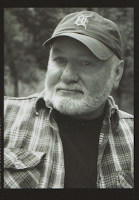It's a commonplace that Germans don't like being reminded of their all-too-recent history, and like much received wisdom, there's some truth in it. Nobody likes it thrown in their face that they were complicit with deep human evil. Every once in a while you might bump into some guy in a
bierstube (I have) who served in the Wehrmacht, and makes no apologies for his war service, but we're talking about a soldier, not Waffen SS or some functionary who played his small part in the Final Solution. Young people, born after the war, get their back up if you mention Hitler and the Nazis, and demand why they should take any responsibility for the buried past---
look at what you white Americans have done to the Negro, is the favored response. And of course there are people of a certain age who blame the Jews, for keeping the memory of the Holocaust alive, without feeling any embarrassment or even a twinge of irony. There's a victim psychology at work, resentful that they've been unfairly singled out, and tarred with too broad a brush. (This is second cousin to the enduring fiction that the French didn't collaborate with the Occupation, or that America First wasn't riddled with virulent anti-Semites and Nazi sympathizers.) "That was another country, and besides, the wench is dead."
So it's a fascinating development, to me, that a few German film-makers have begun to explore this willed national memory loss. DOWNFALL (2004), THE LIVES OF OTHERS (2006), and THE BAADER MEINHOF COMPLEX (2008). It amounts to a public airing of dirty laundry, and predictably, these guys have taken heat for it.

DOWNFALL is about Hitler's last days in the bunker, and the final Russian assault on Berlin. In a sense, it's a war movie, the fighting in the streets a counterweight to the claustrophobic self-delusion of the Nazi leadership, sealed off underground. It's also deeply, viscerally frightening to be trapped with these people, the impossible hope of rescue, Magda Goebbels poisoning her children, Hitler, to the end, consumed by the perfidy of the Jews. It plays like black comedy, this feverish unreality, toxic with evasion and denial, but there isn't any comic relief in sight, only bitter disgrace, and suicide, and lasting shame for the survivors. The movie was attacked by critics in Germany, not for fudging the historical record, but for 'humanizing' Hitler. A curious complaint. Bruno Ganz, a Swiss, as it happens, manages the weird trick of seeming to shrink inside his clothes, wasting away as you watch. He makes Hitler human, all right, and if anything, all too familiar. This is not a monster, or an alien presence, but a mirror of our own weakness for hatred. Hitler, seen in the flesh, and without disguise, isn't a figure in some distant landscape, the diseased nephew safely hidden in the family closet. No wonder it made Germans uncomfortable.


THE LIVES OF OTHERS and THE BAADER MEINHOF COMPLEX navigate a shifting historical landscape as well. Both are about betrayal. Both are about how Germany defines herself. And both are about doubtful orthodoxies. THE LIVES OF OTHERS takes place in East Germany in the 1980's, when
Stasi informants were everywhere, and on the large scale, it's a study of life in an oppressive police state, although the major characters are actually people of privilege. In detail, though, small things matter, choices of honor, or compromise, guilty secrets, proofs of love. The moral punchline comes in a coda, after the Wall is torn down and the East German regime collapses, and old choices, large or small, can be handled like talismans.
BAADER MEINHOF is something of a cautionary tale, a Cold War story from the 1970's, about the zeal of a convert. Politics are radical and undisciplined, and a splinter faction on the Left turns to violence, a terror campaign against the neo-Fascism of the Old Guard. The security services, reading the Devil's handwriting, react with increasingly brutal tactics. The right-wing press, led by the Axel Springer newspaper chain, impatient with civil liberties, egg them on. They give the Baader-Meinhof gang its name, which over-inflates their importance, and actually generates public sympathy. The ringleaders were captured after a nationwide manhunt. Four of them were later to commit suicide in prison, which gave rise to, shall we say, unanswered questions. The legacy of Baader-Meinhof is mixed, at best.
Taken together, these three pictures don't amount to a critical mass, and nobody expects the Germans to rend their garments and beat their breasts over the crimes of their fathers, any more than you'd expect it of Americans---and everybody, let's face it, is guilty of something. The past is never a closed book. But the unexamined life, Plato tells us, isn't worth much. We don't need to be haunted by regret, or brood on the wrongs done us, or weep for the sins of men. We do require of ourselves an accounting. Choices of honor, or compromise, guilty secrets, proofs of love.














































